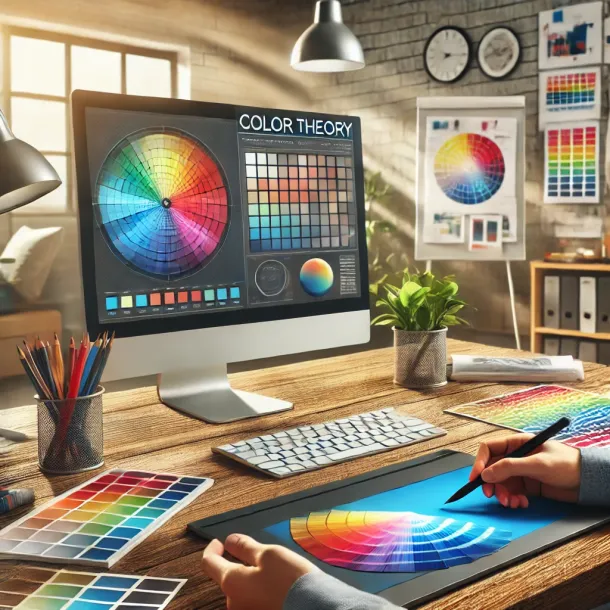The Impact of AI and Machine Learning on the Future of Design
The Impact of AI and Machine Learning on the Future of Design
Artificial Intelligence (AI) and Machine Learning (ML) are transforming various industries, and the field of design is no exception. These technologies are reshaping how designers approach their work, offering new tools that enhance creativity, streamline processes, and push the boundaries of what’s possible. As AI and ML continue to evolve, their impact on the future of design becomes increasingly profound, promising to revolutionize everything from graphic design to user experience (UX) and product development. In this article, we will explore how AI and ML are influencing the design industry and what the future holds for designers in this rapidly changing landscape.
AI and ML: A New Era for Creativity
One of the most significant impacts of AI and ML on design is their ability to augment creativity. Traditionally, design has been viewed as a purely human-driven process, requiring intuition, aesthetic sense, and creative problem-solving skills. However, AI and ML are beginning to challenge this notion by providing tools that not only assist but also enhance the creative process.
Generative Design: Expanding Creative Possibilities
Generative design is a perfect example of how AI is pushing the boundaries of creativity. This technology uses algorithms to generate a wide range of design options based on specific inputs and constraints. Designers can input parameters such as materials, manufacturing methods, and functional requirements, and the AI generates multiple design solutions that meet these criteria.
- Increased Efficiency: Generative design allows for rapid exploration of design possibilities, significantly reducing the time it takes to arrive at a final design. This efficiency enables designers to focus more on refining and improving concepts rather than starting from scratch.
- Unconventional Solutions: AI can explore design options that might not be immediately obvious to a human designer, leading to innovative and unconventional solutions. For example, AI-generated designs for products like chairs or buildings often feature complex structures that are both functional and aesthetically unique.
AI-Powered Design Tools
AI-powered design tools are becoming increasingly common, offering features that help designers work more efficiently and creatively. These tools can automate repetitive tasks, provide design suggestions, and even predict how changes to a design will impact user experience.
- Automation of Repetitive Tasks: Tasks such as resizing images, generating color palettes, or formatting layouts can be automated by AI, freeing up designers to focus on more complex aspects of their work.
- Smart Suggestions: AI can analyze existing designs and suggest improvements or alternatives. For instance, Adobe’s AI tool, Adobe Sensei, can recommend design elements, colors, and fonts based on the context of the project.
- Predictive Analytics: By analyzing user data, AI can predict how different design elements will perform, allowing designers to make informed decisions that enhance user engagement and satisfaction.
The Role of Machine Learning in User Experience Design
Machine Learning, a subset of AI, is particularly influential in the realm of User Experience (UX) design. UX design focuses on creating products that provide meaningful and relevant experiences to users. ML can analyze vast amounts of data to understand user behavior, preferences, and pain points, enabling designers to create more personalized and effective experiences.
Personalization at Scale
One of the key benefits of ML in UX design is its ability to deliver personalization at scale. Traditionally, personalization required manual effort, making it difficult to achieve on a large scale. However, ML algorithms can analyze user data in real-time to create personalized experiences for each user.
- Dynamic Content: Websites and applications can use ML to dynamically adjust content, layout, and recommendations based on individual user preferences and behavior. For example, streaming services like Netflix use ML to personalize the content shown to each user, enhancing engagement and satisfaction.
- Adaptive Interfaces: ML can be used to create adaptive interfaces that change based on user behavior. If a user frequently accesses a particular feature, the interface can prioritize that feature, making it more accessible and improving the overall user experience.
Enhancing Usability Testing
Usability testing is a critical component of UX design, allowing designers to understand how users interact with a product and identify areas for improvement. ML is enhancing usability testing by providing more detailed insights and automating the analysis process.
- Automated Usability Testing: ML can analyze user interactions with a product, identify patterns, and flag potential usability issues. This automation saves time and allows designers to focus on addressing the most critical issues.
- Behavioral Analysis: ML can track and analyze user behavior over time, providing insights into how users adapt to a product and where they encounter difficulties. These insights can be used to refine the design and improve the user experience.
AI and ML in Product Design and Development
Beyond graphic and UX design, AI and ML are also making significant inroads in product design and development. These technologies are enabling designers to create more innovative products, optimize manufacturing processes, and reduce time-to-market.
AI-Driven Prototyping
Prototyping is a crucial step in product design, allowing designers to test concepts and iterate on designs before moving to production. AI is revolutionizing prototyping by automating the creation of digital and physical prototypes.
- Rapid Prototyping: AI can generate digital prototypes quickly, allowing designers to test multiple versions of a product in a short period. This speed is particularly beneficial in industries like automotive and aerospace, where prototyping can be time-consuming and expensive.
- Physical Prototyping: AI-driven 3D printing technologies are enabling the rapid creation of physical prototypes. These prototypes can be tested for form, fit, and function, providing valuable feedback early in the design process.
Optimization of Manufacturing Processes
AI and ML are also optimizing manufacturing processes, making it easier to produce high-quality products efficiently.
- Predictive Maintenance: AI can predict when machinery is likely to fail or require maintenance, reducing downtime and ensuring that production runs smoothly.
- Supply Chain Optimization: ML algorithms can analyze data from across the supply chain to identify inefficiencies and suggest improvements. This optimization can lead to cost savings and faster production times.
Ethical Considerations and Challenges
While AI and ML offer tremendous potential in the field of design, they also raise important ethical considerations and challenges that must be addressed.
Bias in AI-Driven Design
One of the most significant ethical concerns is the potential for bias in AI-driven design. AI systems are only as good as the data they are trained on, and if the training data contains biases, those biases can be reflected in the AI’s outputs.
- Addressing Bias: Designers and developers must be vigilant in ensuring that the data used to train AI models is diverse and representative. Additionally, regular audits of AI systems should be conducted to identify and mitigate any biases.
- Transparency: It’s important for AI-driven design processes to be transparent, allowing users to understand how decisions are made and why certain design choices were implemented.
The Impact on Employment
As AI and ML become more integrated into the design process, there is concern about the potential impact on employment within the design industry.
- Job Displacement: Some fear that AI could replace human designers, particularly in roles that involve repetitive tasks. However, it’s more likely that AI will augment human designers rather than replace them, allowing designers to focus on more creative and strategic aspects of their work.
- New Opportunities: The rise of AI and ML in design is also creating new opportunities. Designers who are skilled in using AI tools will be in high demand, and there will be a growing need for professionals who can bridge the gap between AI technology and creative design.
The Future of Design in an AI-Driven World
Looking ahead, it’s clear that AI and ML will continue to play an increasingly important role in the design industry. These technologies will not only enhance the creative process but also redefine what is possible in design.
Human-AI Collaboration
The future of design will likely be characterized by collaboration between human designers and AI. Rather than replacing designers, AI will act as a powerful tool that enhances their capabilities.
- Co-Creation: AI and human designers will work together in a co-creative process, with AI generating design options and humans selecting and refining the best ones. This collaboration will lead to more innovative and effective designs.
- Continuous Learning: As AI systems learn from the work of human designers, they will become better at understanding aesthetic preferences and creative nuances. This continuous learning will make AI an even more valuable partner in the design process.
Expanding the Boundaries of Design
AI and ML will also expand the boundaries of what is possible in design, enabling the creation of products and experiences that were previously unimaginable.
- Immersive Experiences: AI will play a key role in creating immersive experiences, such as virtual and augmented reality environments. These experiences will be more personalized and responsive to individual user preferences, creating deeper engagement.
- Sustainability in Design: AI can help designers create more sustainable products by optimizing materials, reducing waste, and enhancing energy efficiency. As sustainability becomes an increasingly important consideration in design, AI will be a crucial tool in achieving these goals.
Conclusion
The impact of AI and Machine Learning on the future of design is profound and far-reaching. These technologies are transforming the way designers work, enhancing creativity, improving user experiences, and optimizing product development processes. As AI and ML continue to evolve, they will open up new possibilities for innovation and push the boundaries of what is possible in design.
However, as we embrace these technologies, it’s also important to consider the ethical implications and challenges they present. By addressing issues such as bias and job displacement, we can ensure that the future of design in an AI-driven world is not only innovative but also fair and inclusive.
In the end, the collaboration between human creativity and AI’s computational power will define the future of design, leading to new heights of innovation and creativity.


